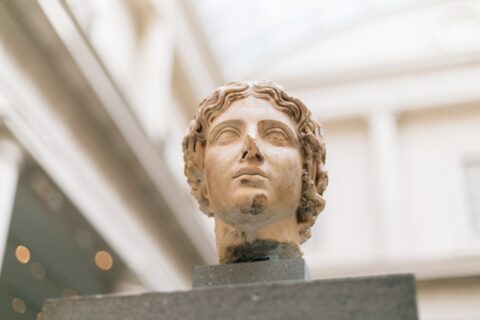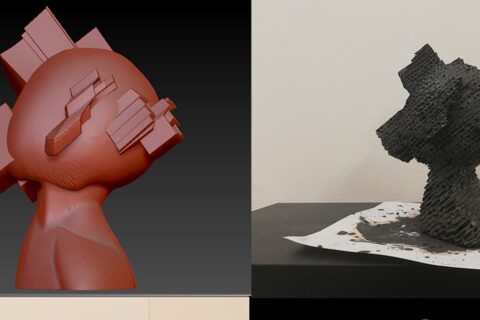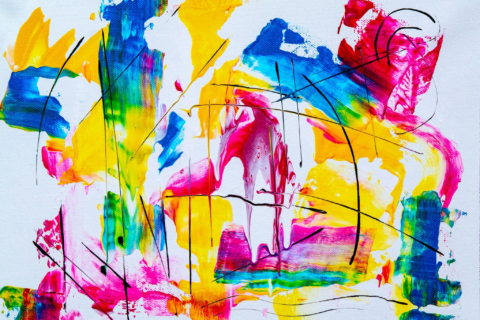
Monumental sculpture
- Leake Camille
- August 5, 2020
- Types of sculpture
- No Comments
The first and perhaps the main is the section of monumental sculpture, which includes single-figure and multi-figure monuments, monuments to commemorate outstanding events and busts-monuments. They are all installed in public places, most often in the open air. They always have a generalized idea and artistic form, are distinguished by their large size (usually two or three real sizes), durability of material. Monumental sculpture serves the cause of promoting the most important transformative social ideas.
Monument always addresses to the masses of viewers and positive image (of course, in terms of those who erect this monument). Urban monuments (their erection is usually under the control of the state) perpetuate those people who have gained universal fame. It is not possible to put a monument in a town square to a person who is close only to the sculptor himself – wife, brother, friend (not only for technical and economic reasons), while creating their portraits for an exhibition or museum in easel plan is quite possible. This is where the watershed between easel and monumental art lies.
Sculpture:
- Designed for a specific architectural-spatial or natural environment;
- addressed to the general public;
- designed to specify an architectural image and to complement the expressiveness of architectural forms with new shades.
Monumental art includes:
- monuments and monuments;
- sculptural, pictorial, mosaic compositions for buildings;
- stained-glass windows;
- Urban and park sculpture;
- fountains, etc.
Master of monumental monument should be able to “put” the figure correctly, make the silhouette expressive and beautiful from all sides and from different distances. The content of the monument should be perceived both from the first glance and when moving past the monument or around it – from many points of view. Various aspects, developing the main idea of the monument, make it more multifaceted and richer. The pose, the gesture of the figure, its movement should be compositionally resolved so as to make its content clear. The expressiveness not only of the face, but of the entire statue, the full conformity of the outwardly-plastic form to the inner world of the hero is an obligatory condition for a monumental monument. Some people perceive it from a distance and, therefore, as a whole; others, those who approach the monument at a close distance, can peer into the facial expression of the statue. The monument should not only have an expressive silhouette, but it should also be proportionate, proportional, a complete work of art. After all, along with the ideological content the monument has architectural and artistic functions. It is not just a beautiful vertical line, volume or rhythmic alternation of volumes but an expressive image of the person that gives sense to the whole architectural ensemble, it centers, crowns the space of the square.
But not every monument will look good against the open space of the square. If the sculptor decided the composition of the monument in the form of a sitting figure, the monument is more appropriate in the park, in the “interior” of the courtyard, or against the background of the architectural structure, than in the middle of the square of the city. It’s much more natural and organic to put such statue where there is no noisy traffic, where the environment disposes spectators to stop near the sculpture, sit and, taking their time, consider it at a close distance. Moreover the sight radius of the sitting figure is reduced to 180 degrees of the circle because of the inexpressiveness of the point of view from the back, and that is why it is better if the sitting figure backs up to the wall of the building or to the park greenery.
The role of the pedestal is very important in the artistic conception of any monument. It’s not just a pedestal under the figure (to be seen better). It is exactly the pedestal on which the hero is elevated for his services to the people. The pedestal must match the architectural surroundings, the character, style and scale of the monument as a whole. Often its facets are decorated with reliefs, more fully revealing the historical significance of the hero. The most common ratio of the figure to the pedestal is 1:1, although other proportions also occur.
A considerable role in the installation of the monument is played by its position in relation to the countries of the world, which determines the nature of its lighting at this or that time of day.
A special section of monumental sculpture is a memorial sculpture (tombstone), which are set on the graves in memory of the merits and moral virtues of the deceased. Art history knows a huge number of types of tombstones – from the majestic Egyptian pyramids to the modest wooden cross-pigeon in the village cemetery. While a city monument seems to address everyone, a gravestone most often addresses only the person closest to it. The sounding of a memorial gravestone is usually lyrical, intimate.









